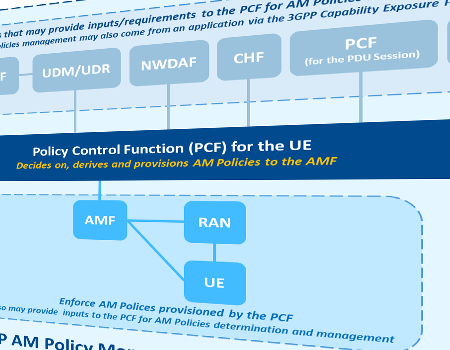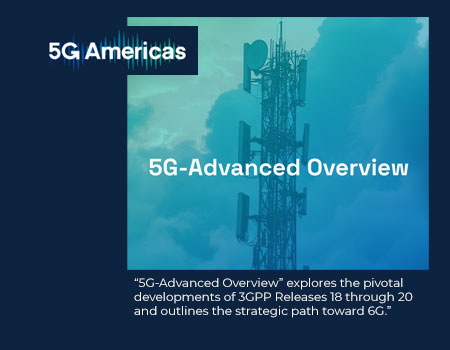By Carolyn Taylor, 3GPP MCC
The need to bring non-RedCap (Reduced Capability) 2Rx (Receiver) XR (eXtended Reality) devices in the 5G network has arisen from form factor limitations of a subset of XR devices, such as wearable XR glasses and head gear, which struggle to support 4 antenna ports.
Before bringing non-RedCap 2Rx XR devices in the 5G network, the impact of RF (radio frequency) and OTA (Over-The-Air) requirements and their potential network impacts related to performance, coverage and capacity had to be considered.
This article will explain what it means to have non-RedCap 2Rx XR devices in the 5G network and what the 3GPP WG RAN2, RAN3 and RAN4 capabilities, requirements and mechanisms are for it.
Impact of RF and OTA (over-the-air) requirements and their potential network impacts
Support of 5G headworn-type XR devices.
Network operators had concerns about non-RedCap 2Rx XR devices impact on spectral efficiency and capacity in their 5G networks, especially network throughput for UEs with 2Rx instead of 4Rx. This was discussed in detail at RAN4#110 (Feb 2024) in Athens Greece and it was determined that RAN4 shall consider both conducted requirements as well as OTA testing for both 4Rx and 2Rx FR1 (frequency range 1) non-RedCap headworn XR devices. Table 1 provides the corresponding frequency range as defined in 3GPP technical specification 38.101-1: NR; User Equipment (UE) radio transmission and reception; Part 1: Range 1 Standalone.
Table 1:Definition of frequency ranges for FR1
|
Frequency range designation |
Corresponding frequency range |
|
FR1 |
410 MHz – 7125 MHz |
Since RAN4 Release 18 core part completion date was March 2024 (TSG#103) and RAN4 Release 18 performance part is targeted for June 2024 (TSG#104), it was decided to include OTA testing for non-RedCap headworn XR devices in the Release 19 work item on TRP (Total Radiated Power), TRS (Total Radiated Sensitivity) and MIMO OTA (Over the Air) testing enhancement Phase 3 (RP-240841).
The XR devices OTA objective for this core part work item are as follows:
- Define test methodology for FR1 non-RedCap headworn XR devices
- Define TRP and TRS test methodology and configuration;
- The performance metric of XR (1Tx and2Tx) is aligned with the definition up to Rel-18 handheld UE;
- Testing time reduction solutions can be considered (further measurement grid optimization is precluded).
The XR devices OTA objective for this performance part work item are as follows:
- Specify TRP and TRS requirements:
- Specify TRP and TRS requirements for new bands for UE based on operator’s demand
- Handheld UEs with 1Tx at bands n3, n5, n7, n8, n77, n79 are first priority;
- Handheld UEs with 2Tx (non-coherent UL MIMO) at n41 and n78 depending on measurement data availability are first priority. Additionally, n77 and n79 are second priority;
- Headworn XR OTA requirements will not be considered until development of suitable head phantom and sufficient number of commercial devices become available;
- Coherent UL MIMO UE OTA requirements will not be considered until sufficient number of commercial devices become available.
The target completion date for this work item to be completed is TSG#109 (September 2025).
RAN WG2 capabilities and requirements to develop signalling support for 2Rx XR devices
For RAN WG2, change requests were needed to technical specifications 38.300, 38.304, 38.306 and 38.331.
The main reason was to include the following requirements:
- To define 2Rx XR UE: two antenna port XR UE;
- To add 2Rx XR UE to the types of UEs which shall acquire SIB1(system information block 1) if cellBarred is set in MIB (master information block);
- To add UE behaviour for 2Rx XR UEs after acquiring MIB (master information block) and SIB1 (system information block 1), specifically how to respond to cell barring in MIB cell barring and intra-freq (intra frequency) reselection indications specific to 2Rx XR UEs in SIB1.
- To add UE capability indication for support of 2Rx XR UEs;
- To add a new indication to inter-node RRC (radio resource control) message, UERadioPagingInformation, that the UE is a 2Rx XR UE;
- To add an exception in the field description of maxNumberMIMO-LayersPDSCH that 2Rx XR UEs always report a maximum number of DL MIMO layers of 2;
- To add a new parameter in BandNR parameters for UE to indicate its support for 2Rx antenna ports in frequency bands where 4Rx antenna ports are mandated.
RAN WG3 mechanisms for device identification to support for 2Rx XR devices
For RAN WG3, change requests were needed to technical specifications 38.300 and 38.413.
The main reason was to include the following requirements:
- To add a new IE to indicate 2Rx XR devices in the UE RADIO CAPABILITY INFO INDICATION message;
- To add a new Reference SPID (Subscriber Profile ID for RAT/Frequency Priority) value for 2Rx XR UE. For 2Rx XR device subscriber the gNB local configuration in idle and connected mode for SPID = 252. SPID is defined in technical specification 38.300: NR; Overall description; Stage 2 as shown below.
|
Configuration parameter |
Value |
Meaning |
|
2Rx XR device subscriber |
true |
The selection provides information that subscriber is an XR device and is permitted to utilise a minimum of two Rx antenna ports for the NR bands where four Rx antenna ports are baseline as given in TS 38.101-1 [88]. |
RAN WG4 to define the RF requirements for 2Rx XR devices
For RAN WG4, one change request was needed to technical specification 38.101-1.
The main reason was to include the following requirements:
- To define two Rx antenna port XR UE: A non-(e)RedCap XR UE that is equipped with only two Rx antenna ports in frequency band(s) where 4 Rx antenna ports are required. The UE is intended to be worn on human head. When in use, is intended to be supported only by/behind the ears and by a nose-bridge resulting in a constrained form factor with limited volume available for Rx chains;
- To define symbol ΔRXR,2R Reference sensitivity adjustment for two antenna ports XR UEs on bands defined in Table 7.3.2-2b;
- To include note for two antenna port reference sensitivity, four Rx antenna ports shall be the baseline for operating band except for two Rx vehicular UE and two Rx antenna port XR UEs indicating UE capability [2Rx XR]. Four Rx antenna ports for RedCap UE is not supported for this operating band.
- To add for two Rx antenna port XR UE(s) indicating UE capability [2Rx XR], reference sensitivity for two Rx antenna ports in Table 7.3.2-1a and in Table 7.3.2-1b shall be modified by the amount given in ΔRXR,2R in Table 7.3.2-2b for the applicable operating bands.
Table 7.3.2-2b: Two antenna port XR UE reference sensitivity allowance ΔRXR,2R
|
Operating band |
ΔRXR,2R (dB) |
|
n7, n38, n41, n48, n77, n78, n79 |
-1.0 |
Conclusion
It was highlighted at TSG#99 (March 2023) by multiple network operators of concerns about the impact to their 5G network throughput for UEs with non-RedCap 2Rx XR devices instead of non-RedCap 4Rx XR devices where NR bands for 4Rx XR devices was currently mandatory. After a year of discussions on the conducted receiver sensitivity (REFSENS) feasibility for 2Rx XR REFSENS it was approved to have a ΔRXR,2R of -1.0dB allowance.
It can be concluded that the non-RedCap 2Rx XR form factor challenges were resolved at RAN#103 (March 2024) based on consensus among network operators and UE vendors and XR devices OTA testing will be addressed by RAN4 in Release 19.


 Technology
Technology




